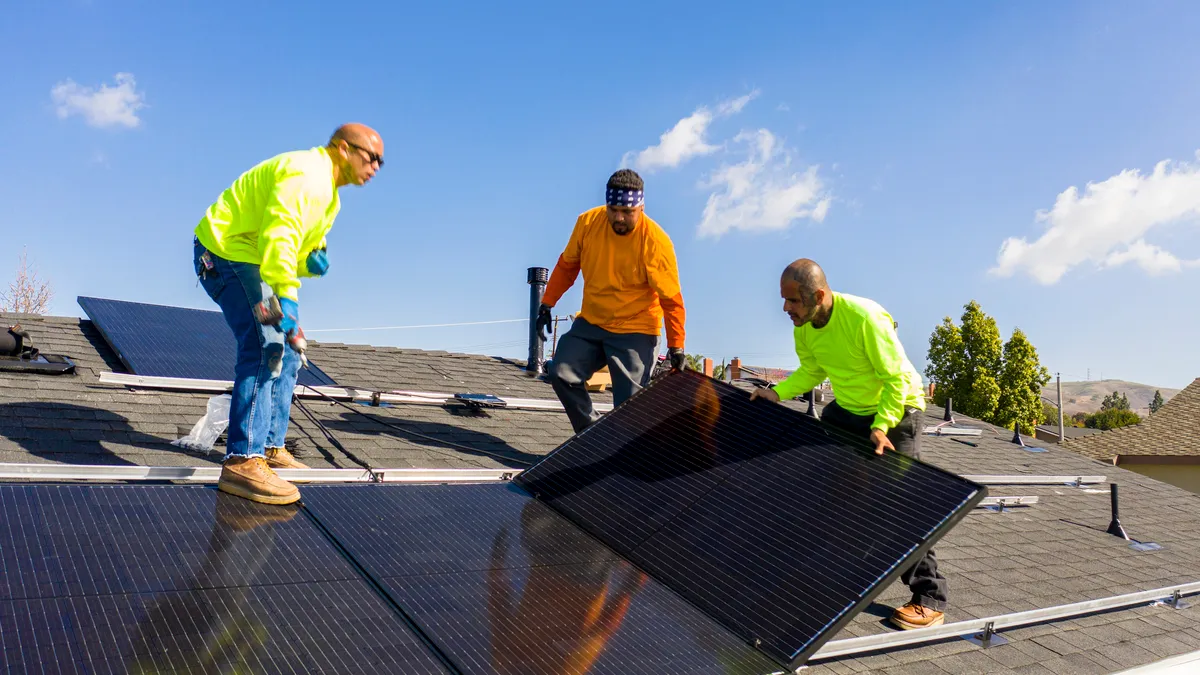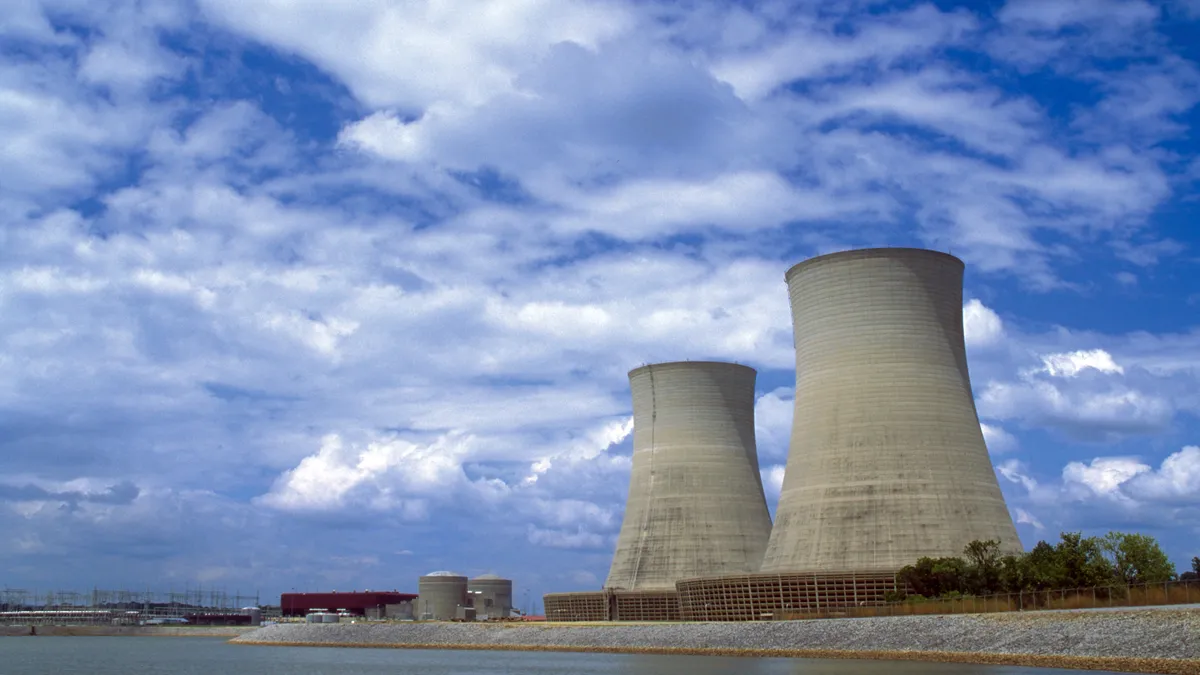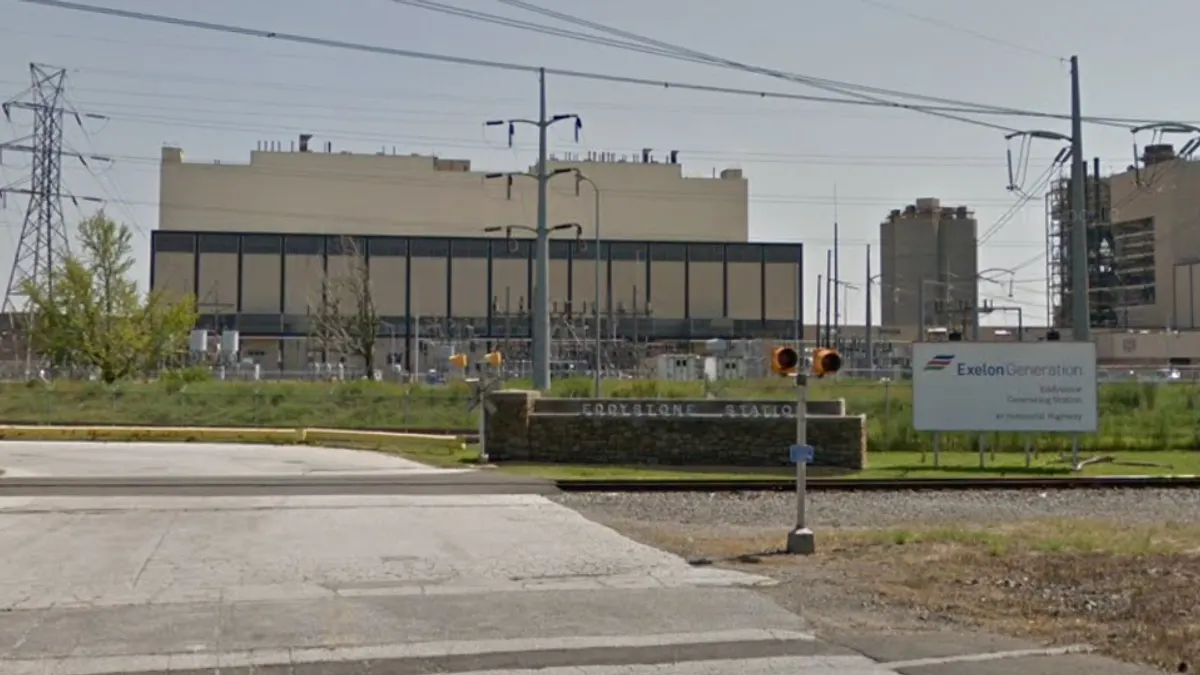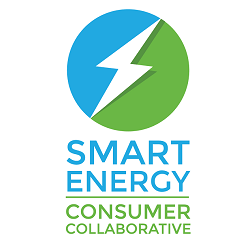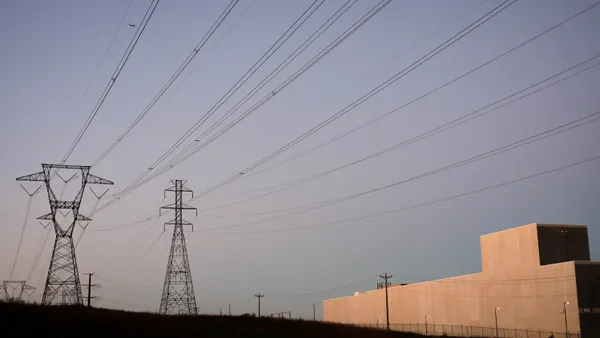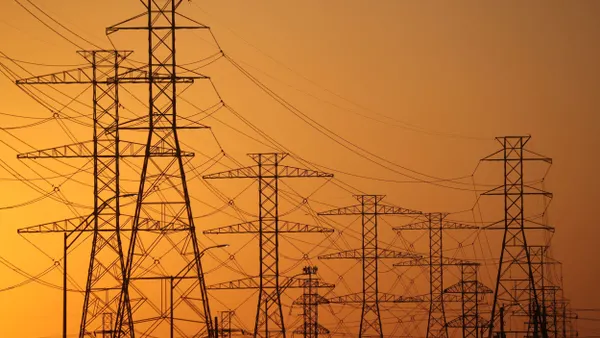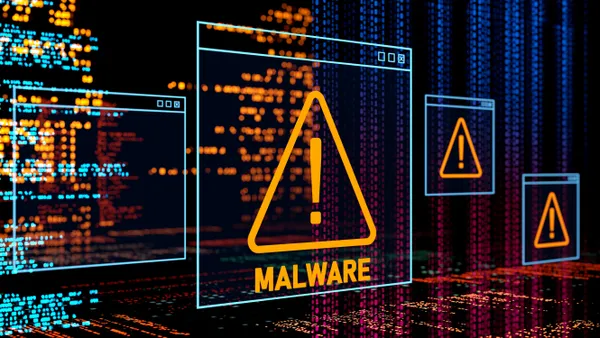Dive Brief:
- Solar and battery storage provider Sunrun announced plans on Monday to create a 30-MW virtual power plant by enrolling up to 7,500 existing and new rooftop solar and battery systems in Pacific Gas & Electric’s footprint.
- Storage systems that enroll in the program will be asked to discharge power to the grid every day between 7 p.m. and 9 p.m. from August through October, a period when electricity demand in California tends to be the highest. Customers will be compensated with a $750 upfront payment and be given a free smart thermostat.
- While virtual power plants are not a new technology, this one is different in that it is laser-focused on the peak of the summer, said Scott Peattie, director of business development with Sunrun. “[I]t will be reliably dispatching every day, so we’re not going to be waiting for an emergency alert from [the California Independent System Operator,]” Peattie said.
Dive Insight:
PG&E and Sunrun’s program stems from a 2021 order from the California Public Utilities Commission that included a suite of energy efficiency measures to reduce electricity demand during periods when the grid is stressed.
The companies’ virtual power plant will work by absorbing the solar energy produced by customers’ panels during the day, and then discharging it back to the grid after the sun has set during the summer months — a period during which California has had challenges maintaining enough power on the grid. The program was approved by the CPUC on Jan. 30, and Sunrun expects to begin enrolling customers in the spring, according to Peattie. The virtual power plant will begin operating on Aug. 1.
The announcement comes as California’s energy sector works to bolster grid reliability amid increasing electricity demand, a changing climate, and a shift to renewable sources of energy. In August 2020, the state faced blackouts amid a record-breaking heatwave. Last September, CAISO faced similarly tight grid conditions, but was able to avoid initiating rolling outages thanks to a combination of increased availability of battery storage, as well as demand response efforts.
Projects like these can play a similar role to front-of-the-meter battery storage in terms of helping support California’s grid, but without a lot of the headaches that come from interconnecting large energy storage projects, Peattie said.
“We’re sort of piggybacking on the interconnection process that customers are already doing to put solar on their roofs, and pair that solar with batteries,” he added.
One of the key lessons Sunrun is hoping to glean from this project is affirmation that customers are “truly ready to participate in this movement,” Peattie said.
“In the past, we’ve been running smaller programs, where we’ve got room for maybe 500 to 1,500 to maybe at most 2,000 customers at full scale. This one is going to be able to handle 7,500 customers,” he said.
Virtual power plants can be a real “grid workhorse,” providing multiple services and benefits to the power system, agreed Kate Unger, senior policy advisor at the California Solar & Storage Association, in an email. This project, as described by Sunrun, is a three-fer, she added — “it lowers power costs, reduces stress on the system overall, and decreases our reliance on fossil fuel power sources.”
Another advantage of a virtual power plant like this one is that because it is composed of many individual batteries, it isn’t subject to a single point of failure — particularly important for reliability service during summer peak hours, she added.
“This contract will be for a very targeted dispatch schedule aimed at times when the California grid often faces its most critical need. I expect this project to demonstrate the true reliability value of customer-sited batteries aggregated together into virtual power plants,” Unger said.



